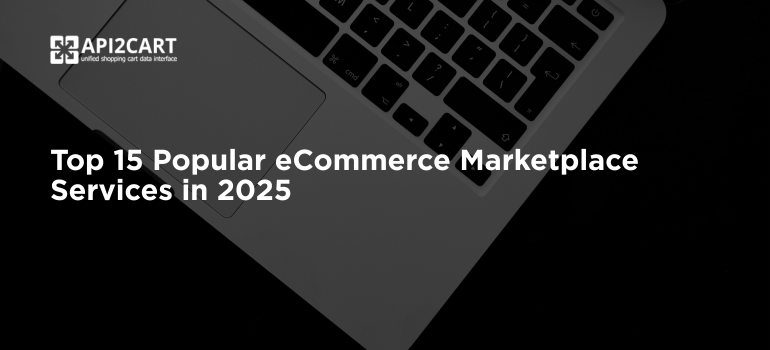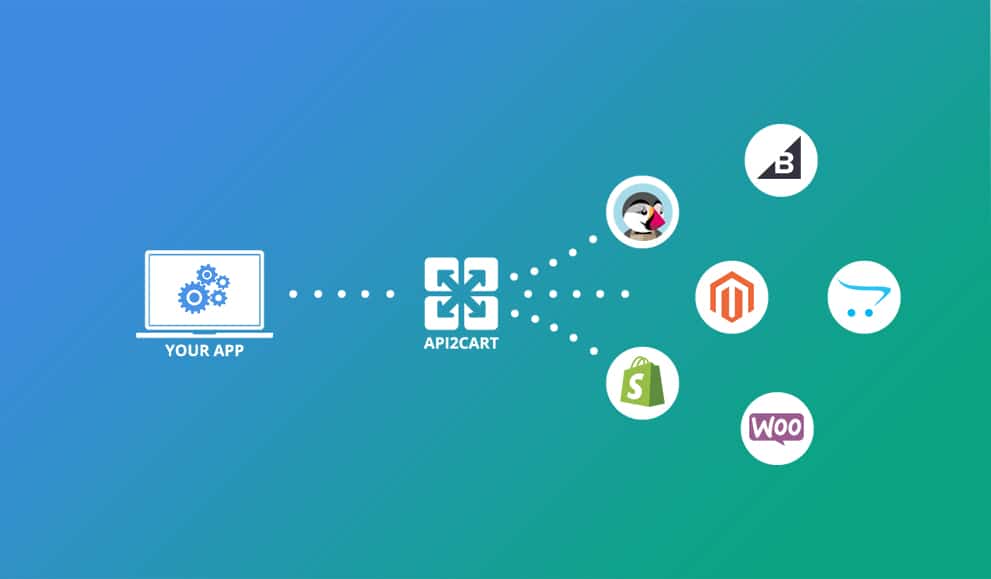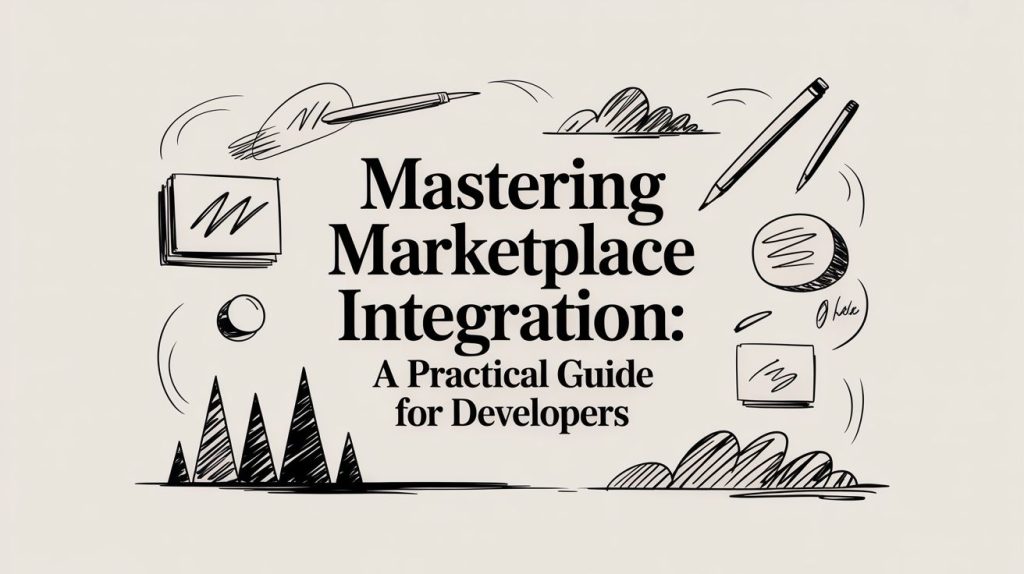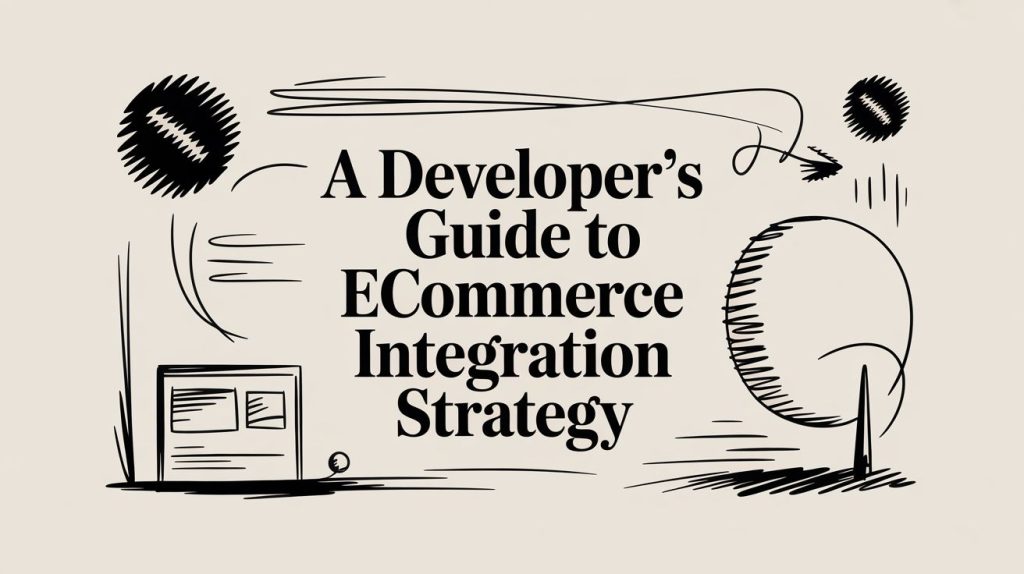
The demand for powerful eCommerce marketplace services continues to grow in 2025, creating new opportunities for SaaS providers building tools like order management systems, shipping solutions, multi-channel software, and PIM platforms. For developers and eCommerce software owners, connecting to these marketplaces isn’t just about adding another integration — it’s about enabling functions that online retailers rely on every day, from product listings and order import to real-time inventory synchronization and shipping updates.
However, each marketplace has its own API, data structure, and requirements. This makes it challenging for software vendors to scale integrations efficiently while keeping maintenance costs low. In this article, we’ll look at the top 15 most popular eCommerce marketplace services in 2025 and explore why they matter for SaaS companies. Understanding these platforms will help you decide where to focus your integration efforts and how to deliver the most value to your clients.
What are eСommerce Marketplace Services?
eCommerce marketplace services are online platforms that connect multiple sellers with buyers in one place, such as Amazon, eBay, Walmart Marketplace, Etsy and many others. Also, these services provide the infrastructure for product listings, order processing, payment handling, shipping management, and customer communication.
For developers and owners of eCommerce software, marketplace services matter because they define how store data is accessed, updated, and synchronized. Generally, each marketplace offers its own API and integration rules, which software vendors need to follow in order to enable key features for their clients, such as:
- Importing and managing orders across different channels;
- Syncing product details and inventory levels in real time;
- Handling customer, shipment, and pricing data efficiently.
In short, eСommerce marketplace services are the backbone of multi-channel retail. For SaaS vendors, they represent both an opportunity — to expand software functionality and attract more clients — and a challenge, since maintaining multiple marketplace integrations requires significant technical effort.

Top 15 Ecommerce Marketplace Services in 2025
Below is an overview of 15 popular eCommerce marketplace services, tailored for eCommerce SaaS:
1. Amazon Marketplace
Amazon Marketplace connects millions of third-party sellers with a massive customer base and provides FBA (Fulfillment by Amazon) to ease logistics. By the early-mid 2025, there are about 9.7 million registered sellers on Amazon of which a quarter are active. It is estimated that there are up to 2.5 million active sellers all over the world.
Top regions: United States, UK, Germany, India, Japan, and Canada.
2. Alibaba Group (Taobao & Tmall)
Alibaba’s platforms are the leaders in the eCommerce market of China and offer C2C (Taobao) and B2C (Tmall) services. Alibaba has hundreds of millions of users with a huge logistics and payments infrastructure.
Top regions: Mainland China, Southeast Asia.
3. eBay
eBay is one of the oldest and most popular worldwide markets that people prefer to use to make auctions and buy secondhand items. It has a strong developer relevance because of its developed API and wide seller ecosystem. eBay has approximately 134 million active buyers worldwide.
Top regions: United States, Europe.
4. Shopee
Shopee is a mobile-first platform blending social engagement with commerce, Shopee garners around 587 million monthly visits, especially strong in emerging Southeast Asian markets.
Top regions: Southeast Asia, Taiwan, Brazil.
5. Shopify
Although Shopify is primarily a hosted store platform, its multi-channel capabilities and integration with marketplaces make it essential for SaaS providers. In 2025, approximately 4.82 to 5 million live stores are active globally, out of nearly 9.5 million created.
Top regions: United States (around 57%), UK, Australia, Germany, Canada, and Brazil.
6. Walmart
Walmart’s online marketplace has rapidly expanded, which utilizes the physical logistics network of the company. It has been reported to have 100,000+ active sellers and more than 420 million product listings.
Top regions: United States and Mexico.
7. MercadoLibre
MercadoLibre is the top marketplace in Latin America, combining eCommerce with fintech and localized logistics. As of early 2025, the platform has 1 million active sellers servicing over 218 million active users across 18 countries.
Top regions: Argentina, Brazil, Mexico, Colombia, and across Ibero-America.
8. Etsy
Etsy specializes in handmade, vintage, and creative goods with a curated seller base. By Q1 2025, it had around 5.4 million active marketplace sellers and 88.5 million active buyers. It has an inventory of more than 100 million active listings.
Top regions: United States, UK, Canada, Germany, France.
9. Rakuten
Rakuten is the largest marketplace in Japan with a loyalty-based model and extensive product offering. It has about 492 million visits per month.
Top regions: Japan.
10. Temu
Temu is a fast-growing low-cost market with its launch in 2022 By April 2025, it had extended to over 90 markets worldwide, thanks to aggressive pricing and marketing strategy.
Top regions: North America, Europe.
11. Flipkart
Flipkart, backed by Walmart, is an Indian eCommerce company that has a strong coverage of APIs to manage orders, products, and other seller operations. It has the greatest potential to integrate in the Indian market where it is a favorite of local sellers and logistics.
Top regions: India.
12. AliExpress
AliExpress is a subsidiary of Alibaba, a global retailer with direct-to-manufacturer pricing and buyers all over the world. It has a low price, which is direct-from-manufacturer, making it a useful addition to multi-regional SaaS.
Top regions: Eastern Europe, Latin America, and the CIS countries.
13. JD.com
JD.com is a Chinese eCommerce powerhouse known for self-operated logistics and same-day delivery. It sees nearly 499 million monthly visitors.
Top regions: Mainland China.
14. Meesho
Meesho is a social reselling platform and enables small business owners to sell through WhatsApp and Facebook. Its fast rise to the number of millions of users makes it an interesting API partner to SaaS products that target decentralized seller networks.
Top regions: India.
15. Jumia
As the leading African marketplace, Jumia combines payment, delivery logistics across the various countries. More than 100,000 sellers operate in markets in countries, including Nigeria, Egypt, and Kenya.
Top regions: Africa.
In 2025, eСommerce marketplace services continue to shape the way merchants sell and customers buy across the globe. From giants, such as Amazon, eBay, and Walmart to region-specific leaders like MercadoLibre, Jumia, and Flipkart, these platforms establish the workflows, data flows, and customer expectations that SaaS providers have to support.
For software developers and owners of eCommerce software, staying connected to these marketplaces means unlocking critical functions for clients—order import, inventory synchronization, product listings, and shipping updates—all of which are essential for multi-channel success.

How Important It Is for SaaS to Integrate with Popular Marketplaces
Here are the main reasons why marketplace integrations matter:
- Access to vital store data – SaaS applications can pull and sync orders, products, customers, inventory, and shipments, enabling merchants to manage all operations from one place;
- Enablement of core features – The integration with marketplaces, such as order import, inventory synchronization, automated product listings, and shipping updates rely on stable integration;
- Merchant demand and retention – The more marketplaces your software supports, the more attractive it becomes to merchants who want all-in-one solutions and fewer manual processes;
- Global market reach – Marketplaces, such as Amazon, MercadoLibre and Jumia cover whole regions. Also, connecting to them opens up new customer bases immediately across the world;
- Faster time-to-market – Pre-built marketplace integrations accelerate product development and let vendors focus on differentiation instead of repetitive API work;
- Competitive edge – SaaS platforms with broader integration coverage stand out against competitors and reduce churn by meeting merchants’ channel needs.
So, supporting popular marketplaces allows SaaS vendors to provide more value, expand globally, and scale more rapidly, but, at the same time, make sure that their solutions remain relevant in the current eCommerce landscape.
Unified Approach to Marketplace Integrations Using API2Cart
Each marketplace has its own API standards, frequent updates, and unique technical requirements. Also, building and maintaining multiple integrations in-house can become a heavy burden for development teams, slowing down time-to-market and increasing long-term costs.
That’s why a unified approach to marketplace integrations is becoming increasingly valuable, especially when leveraging solutions, such as API2Cart.
Instead of creating and maintaining dozens of separate integrations, SaaS vendors can connect once through API2Cart, a unified API that provides access to 60+ popular eCommerce platforms and marketplaces, including Shopify, Walmart, Flipkart, Shopee, Amazon, Temu, eBay, and others, at once – all through a single integration.

Thus, with API2Cart, your software can easily get, add, update, and sync critical data, such as customers, products, orders, shipments, and inventory across multiple sales channels. Eventually, this will reduce development time, reduce the need for maintenance, and focus on delivering features that truly differentiate their products.
Start your FREE 14-day trial with API2Cart and connect your software to 60+ leading marketplaces and eCommerce platforms through a single unified API!
FAQs
1. API2Cart: Offers a unified API that integrates software with 60+ eCommerce platforms and marketplaces, including Shopify, Magento, WooCommerce, OpenCart, Etsy, Wix, Shopee, Temu, TikTok Shop, Flipkart, and others, at once - all through a unified API. It simplifies management and synchronization of valuable store data, such as orders, products, customers, shipments, inventory, and more.
2. Apideck: Provides a broad range of integrations across various apps and platforms, focusing on streamlining SaaS integrations with real-time data sync and API management.
3. Rutter: Offers an API that connects various eCommerce platforms and tools, focusing on handling financial, inventory, and order data with seamless integration.
All of these services simplify the integration process, but API2Cart is especially strong for businesses looking to manage multiple eCommerce platforms through a single API with easy setup and eCommerce-specific features.



